-
Car Reviews
- All reviews
- Midsize SUVs
- Small cars
- Utes
- Small SUVs
- Large SUVs
- Large cars
- Sports SUVs
- Sports cars
- Vans
Latest reviews
- Car News
-
Car Comparisons
Latest comparisons
- Chasing Deals
The Isuzu D-Max is available in Australia with 11 4×4 variants, but do you need to go all the way to an X-Terrain to get all the ute you want?
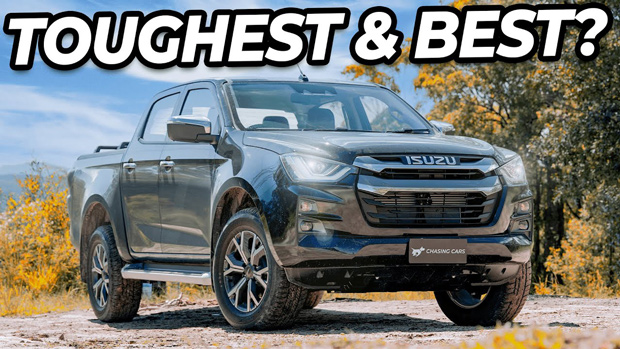
Every day, the Isuzu D-Max creeps closer towards the territory of the Toyota Hilux and Ford Ranger – the two best selling utes in Australia in popularity with buyers.
In 2022, Isuzu sold 20,124 4×4 D-Maxes to Australian buyers (up from 18,639 units in 2021), making the D-Max the fourth best-selling 4×4 ute model in the country.

Australians sure do love their utes and are now spoilt for choice. Not only are most modern dual-cabs safer than ever, but they are increasingly more capable on and off road and able to cater for all kinds of lifestyles.
Enter the Isuzu D-Max LS-U+, the talk of the town and trail for this review. It’s the second grade from the top in the D-Max hierarchy, sitting only below the flagship X-Terrain.
This particular model is priced from $63,500 before on-road costs, exactly $4000 more affordable than the flagship X-Terrain.
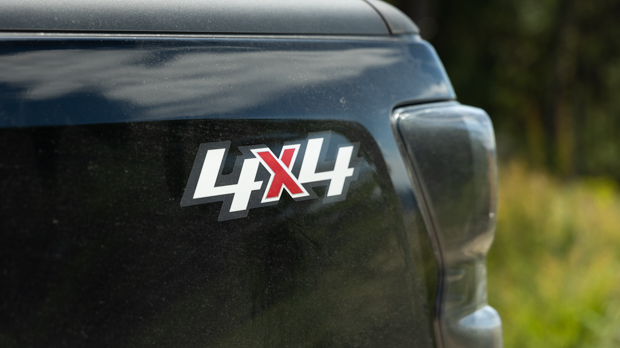
In terms of competitors, this puts the LS-U+ at a slightly steeper price point to the $61,930 Toyota Hilux SR5, but cheaper than the $71,190 Ford Ranger Wildtrak V6.
Let’s dive into all things Isuzu D-Max and see whether the LS-U+ is all the ute you really ever need.
The Isuzu D-Max LS-U+ includes as standard the following features:
But how does a regular LS-U compare to the LS-U+? The LS-U gets a manual driver’s seat, cloth seat trim, no heated seats function and, oddly, non-illuminated vanity mirrors. Otherwise, the rest of the LS-U is the same as the LS-U+.
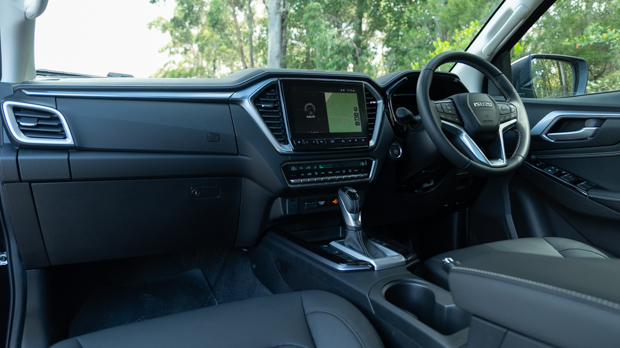
So how does it all stack up in terms of value?
While the flagship X-Terrain gains an aero sports bar, a dark exterior package including fender flares, guards, radiator grille and tailgate handle, dark grey roof rails, a matte black roller tonneau and red stitching for the leather-appointed seats, you’re really not getting any more performance, any suspension enhancement or added standard technology over a LS-U+.
The X-Terrain might look a bit tougher, but is it worth the extra four-grand investment over the LS-U+? I’m not certain that it is.
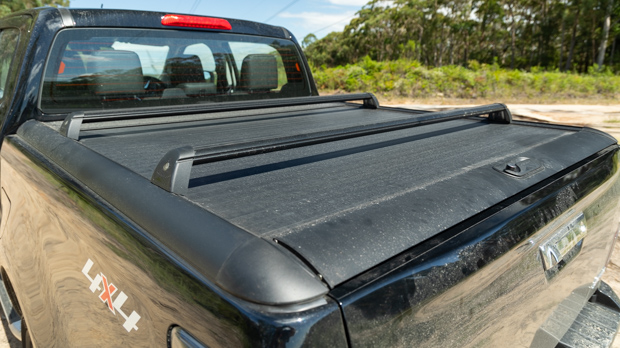
However, it’s definitely worth noting that our LS-U+ is fitted with a few options, including a rear rack system ($545), a manual roller tonneau cover ($3099), rubber floor mats front and rear ($208), and Basalt Black paint ($650) – that brings ‘my’ D-Max LS-U+ to just over $73,000 driveaway.
I personally wouldn’t go for the rear rack setup or the roller tonneau, but it clearly doesn’t take much for a LS-U+ to creep into X-Terrain territory when you start ticking the options boxes.
I’ve been fortunate to drive this D-Max LS-U+ for almost two weeks, including a trip to Stockton Beach near Newcastle with the team from Isuzu’s I-Venture Club.
I’ve been able to get a really good grasp on the car, from driving around town to long stints on the highway and, of course, on the beach and across the dunes at Stockton.
All in all, I’ve done 1000km of real-world testing in the Isuzu ute.
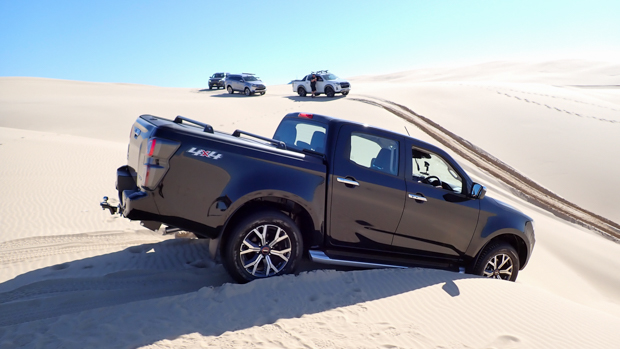
The Isuzu D-Max is powered by a 3.0-litre turbo-diesel four-cylinder engine that produces outputs of 140kW/450Nm. With its truck engine roots, this 4JJ3 power unit has proven itself a reliable and dependable one for quite some time.
It’s a strong engine and seems to pair really well with the six-speed torque converter automatic transmission.
Out on the open road, the D-Max LS-U+ settles into the highway grind pretty well, with the engine humming away quietly. However, even with the tyre pressures at their correct placard rating, the typical jiggly leaf-sprung rear end made the ride somewhat unsettled.
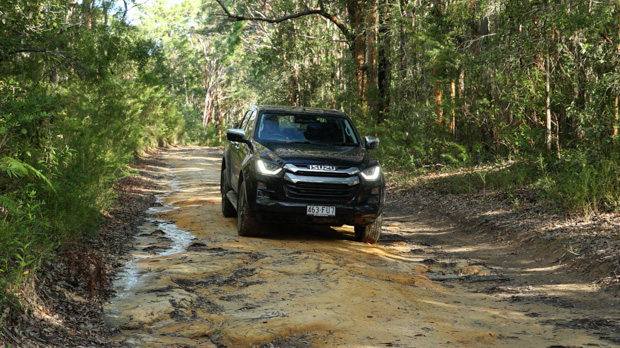
It’s not overly bad, by any means, but it’s certainly noticeable. Around suburban Sydney, the ride is okay, but not brilliant. Pot-marked road surfaces did cause the LS-U+ to jump around somewhat, but I learnt to live with it over my tenure with the car.
In terms of handling and dynamics, the Isuzu D-Max has never been a corner carver, but it’s not expected to be. Instead, it feels secure, safe to drive and very solid – those who feel more comfortable in larger cars will like the D-Max, that’s almost certain.
When cornering, the D-Max is actually pretty stable, however you do get the traditional body roll feeling from a car of this size and weight.
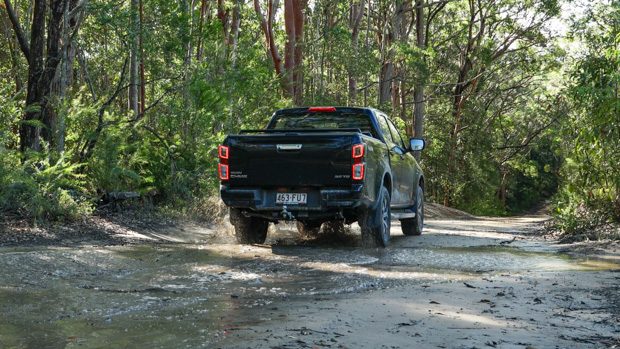
But where the D-Max really shines is when you take it off-road.
During my Stockton Beach experience with Isuzu, we dropped the tyre pressures to around 18psi for our sand drive. I was pleasantly surprised by how well the Isuzu ute handled things off the bitumen.
In either soft or hard sand, the D-Max felt strong and handled things with ease (I didn’t even get bogged!). The 3.0-litre turbo-diesel handled the sand challenges confidently and didn’t seem to put up much fuss at all.
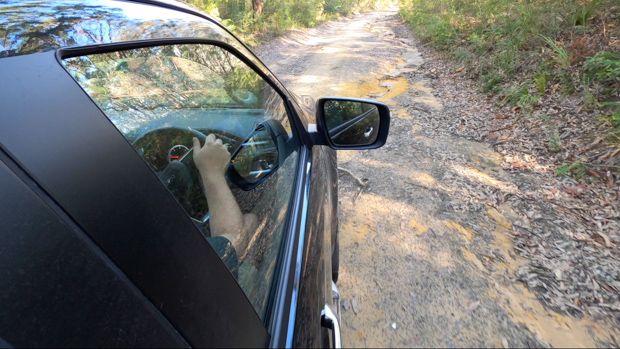
Those who think that 140kW and 450Nm is not ample enough for a four-wheel drive should really drive a D-Max or MU-X – there is plenty of power on tap. Not once was I wishing there was more grunt to push me along.
Through really soft sand on the way back down the beach, the engine pushed on through, happily singing away and allowed me to keep up the momentum even when the going got a little tough.
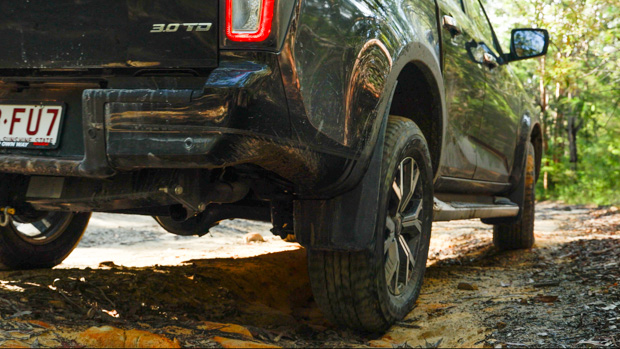
I didn’t get to do any super extreme off-roading this time around. However, with the D-Maxs I’ve driven in the past, they are surprisingly capable machines when the path gets tough and challenging.
All in all, the Isuzu drives pretty well, although I’m still not set on the way the big ute rides out on the black top. What I can say is that the D-Max more than makes up for it when you take it off road.
Inside the D-Max LS-U+, my first thought was that the cabin felt premium, especially for a ute.
The leather-accented seats are comfortable, feel good to the touch and look the part, too. There are some scratchy plastics around the place, but generally interior trim is well put together. The main touch points, such as the steering wheel and centre console, feel premium and well built.

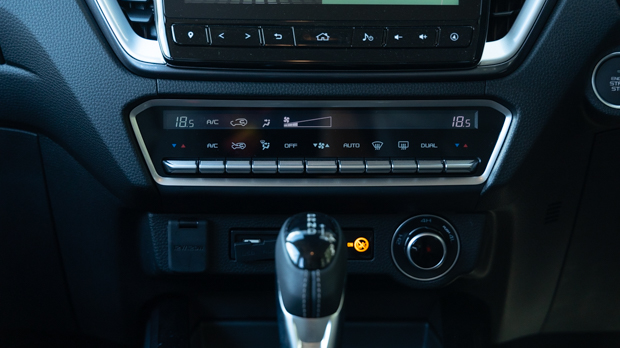
In terms of standard cabin technology, the D-Max LS-U+ comes fitted with a 9.0-inch central touchscreen that caters for wireless Apple CarPlay and wired Android Auto. Connectivity to the screen works well, however the biggest issue here is just how outdated the Isuzu’s infotainment is already starting to look.
The touchscreen doesn’t have the sharpest resolution and the graphics themselves aren’t ageing particularly well, either. The reversing camera resolution is also quite low when compared to some other rivals.
In the driver instrument cluster, Isuzu still runs analogue dials for engine revolutions and speedometer, but in the middle is a small screen that shows a fair chunk of information, including a digital speedometer, lane keep assist indicator, fuel economy, fuel range, a music player and more.
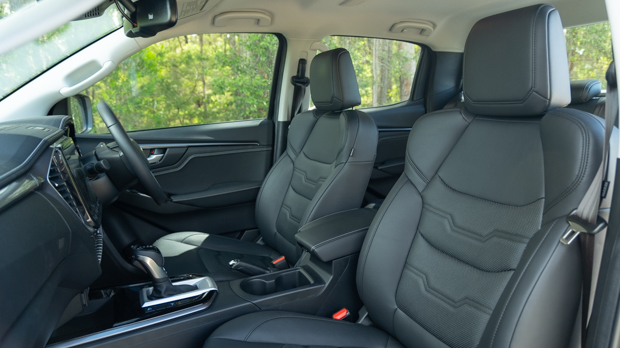
You can move throughout the menus thanks to buttons on the steering wheel.
This is the same instrument cluster layout that Isuzu uses for its flagship X-Terrain – I just wish the higher-end D-Maxs got a fully digital cluster like the current Ford Ranger. Perhaps in the next generation of D-Max we will see this cluster updated.
Other notable features in the D-Max LS-U+ include front and rear USB-A charging ports, two deep front cupholders, large door bins and a handy storage area above the dash.
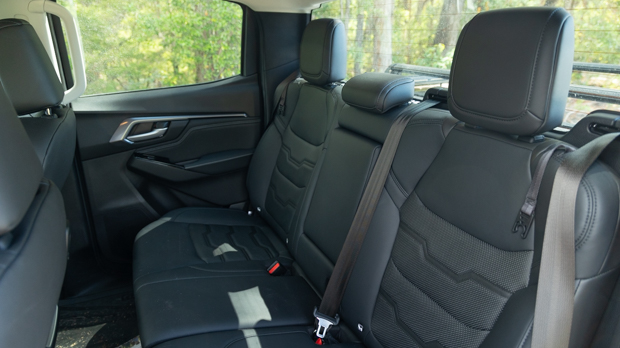
For rear occupants, seating is pretty good for kids or teenagers, but a little tight for full-size adults. There are two cupholders in the rear, along with a USB-A port and rear air vents.
In terms of cargo space for this particular vehicle, rear tray space is hindered somewhat in this very press vehicle by the rear rack system – forget trying to move house with this setup – but the interior dimensions of the tray are 490mm high, 1122mm wide (between wheel housings) and 1570mm long.
That works out to be around 863 litres of space within the tray for all your belongings.
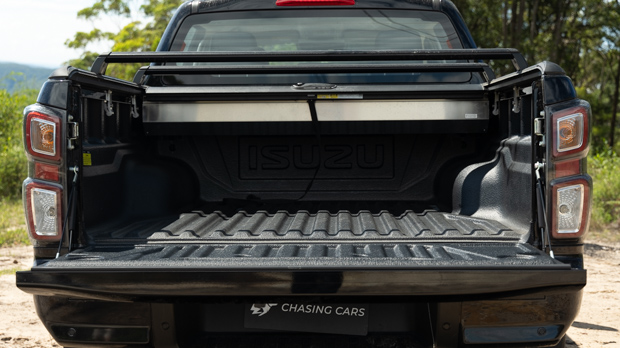
That’s still a lot of space, however it’s worth investing in some cargo dividers or crates to securely store your groceries if you want to put them in the tray.
As part of the MY23 update, Isuzu added a gas-strut assisted tailgate to the D-Max. This is a big win as the tailgates can be quite heavy and the struts do make life easier for those going to and from the tray often. There are also four cargo tie-down points in the LS-U+ for strapping down your load if you need it.
In 2022, the Isuzu D-Max was rated five stars by ANCAP, scoring well in adult and child occupant protection, as well as for safety assist.
The D-Max is fitted with the following safety features as standard:
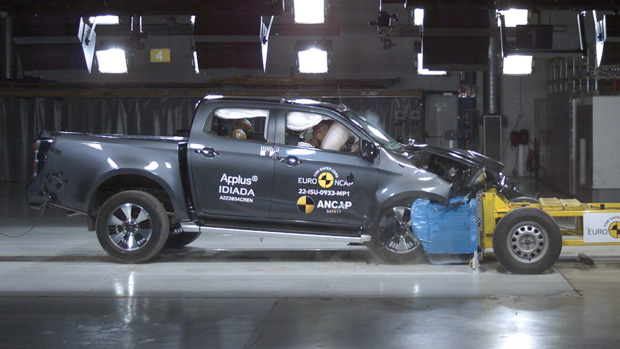
In practice, Isuzu has implemented this safety technology quite well. I didn’t find that the lane keep assist was overly intrusive – it certainly did not cut at the wheel like you find with some brands.
The only over-sensitive feature I found was the autonomous emergency braking’s forward collision warning function, which on the highway did beep and flashed its red lights even though it was travelling at least three or four car lengths away from an approaching vehicle.
That said, you can adjust the distance measure to mitigate its early activation.
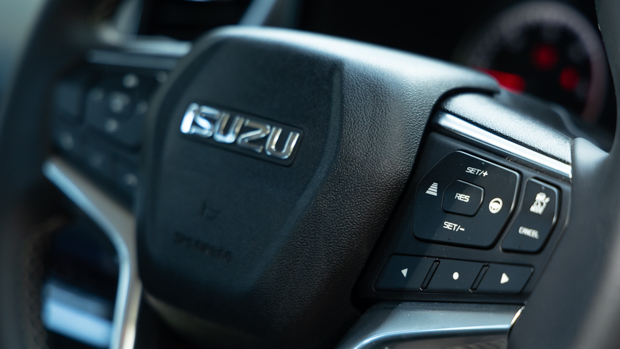
I think it’s definitely worth spending ten or 15 minutes adjusting the safety parameters to how you like it with the D-Max – it’ll make for a better driving experience going forward.
All in all, I found the D-Maxs safety systems well tuned and well suited to our roads.
Isuzu claims that the D-Max returns a combined fuel economy of 8.0L/100km, however the lowest figure we could get during two weeks of combined driving was 8.6L/100km – most of which was highway kilometres.
This being said, if you happen to go off-road, such as on a sandy beach, the D-Max will easily push past 9.5L/100km for its fuel economy.
In terms of warranty, the Isuzu D-Max is covered by a six-year, 150,000km warranty and over five years will cost $2435 to service. Intervals are 12 months or every 15,000kms and Isuzu caps servicing cost across the first seven years of ownership.
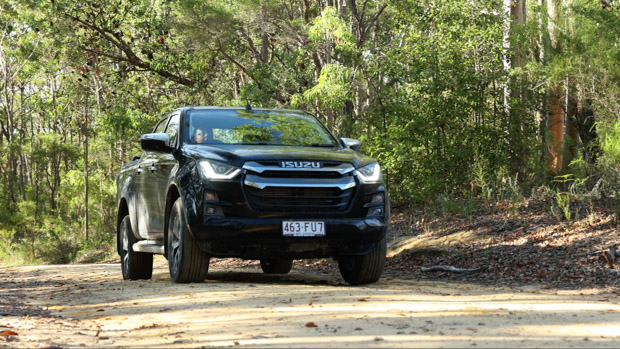
How does that stack up to a Ford Ranger V6? Well, the Ranger is covered by a five-year, unlimited-kilometre warranty and will cost $2520 to service over five years, making the D-Max LS-U+ a little bit cheaper to service, however the Ranger has the advantage by having an unlimited-kilometre warranty.
It’s also worth noting diesel prices are still high, so filling up the D-Max won’t be cheap – it could cost around $130-$145 to fill the ute each time you need to refuel with diesel prices currently sitting around $2.00 per litre in NSW.
The Isuzu D-Max has come a long way in Australia in a relatively short amount of time. And it’s now one of the big hitters in the Australian ute segment.
It offers excellent off-road capability, is comfortable and practical, and pushes the game ahead in terms of standard safety equipment.
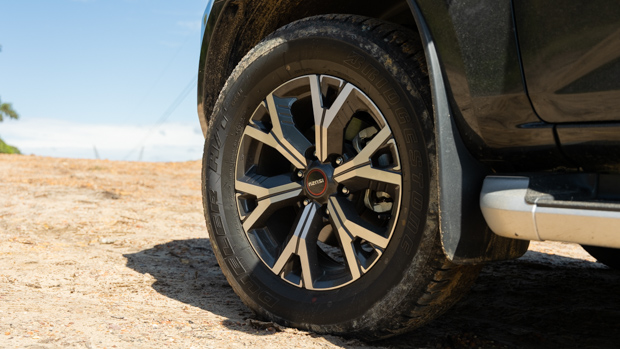
While Aussies might immediately gravitate towards nameplates such as the Toyota Hilux and Ford Ranger – it certainly shows in the sales charts – the Isuzu D-Max has much of the same performance and off-road dynamics as the two biggest sellers.
The D-Max LS-U might go without a V6 engine or all of the fancy next-gen technologies, but the Isuzu does a lot with what it’s got.
What could be improved? Highway ride quality could certainly be better, along with a more modern infotainment system, but otherwise, I have really enjoyed the time I have spent with the D-Max over my two-week custodianship.

Again, I come back to the question: do you really need the flagship X-Terrain? If the apex model came with a different engine or suspension setup, then maybe yes, I would invest in getting an X-Terrain instead.
But the LS-U+ doesn’t represent a downgrade in any meaningful way and does so much right that it’s hard to justify the jump up for what is largely a cosmetic enhancement pack.
Jump down the ladder, save yourself $4000 and get the LS-U+ instead. You definitely won’t be disappointed.
Key specs (as tested)
About Chasing cars
Chasing Cars reviews are 100% independent.
Because we are powered by Budget Direct Insurance, we don’t receive advertising or sales revenue from car manufacturers.
We’re truly independent – giving you Australia’s best car reviews.
The estimate provided does not take into account your personal circumstances but is intended to give a general indication of the cost of insurance, in order to obtain a complete quote, please visit www.budgetdirect.com.au. Estimate includes 15%^ online discount.
^Conditions Apply
Budget Direct Insurance arranged by Auto & General Services Pty Ltd ACN 003 617 909(AGS) AFSL 241 411, for and on behalf of the insurer, Auto & General Insurance Company Limited(ABN 42 111 586 353, AFSL 285 571).Because we don’t know your financial needs, we can’t advise you if this insurance will suit you. You should consider your needs and the Product Disclosure Statement before making a decision to buy insurance. Terms and conditions apply.
Indicative quote based on assumptions including postcode , 40 year old male with no offences, licence suspensions or claims in the last 5 years, a NCD Rating 1 and no younger drivers listed. White car, driven up to 10,000kms a year, unfinanced, with no modifications, factory options and/or non-standard accessories, private use only and garaged at night.
^Online Discounts Terms & Conditions
1. Discounts apply to the premium paid for a new Budget Direct Gold Comprehensive Car Insurance, Third Party Property Only or Third Party Property, Fire & Theft Insurance policy initiated online on or after 29 March 2017. Discounts do not apply to optional Roadside Assistance.
2. Discounts do not apply to any renewal offer of insurance.
3. Discounts only apply to the insurance portion of the premium. Discounts are applied before government charges, taxes, levies and fees, including instalment processing fees (as applicable). The full extent of discounts may therefore be impacted.
4. We reserve the right to change the offer without notice.